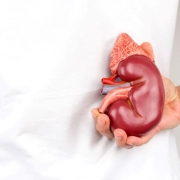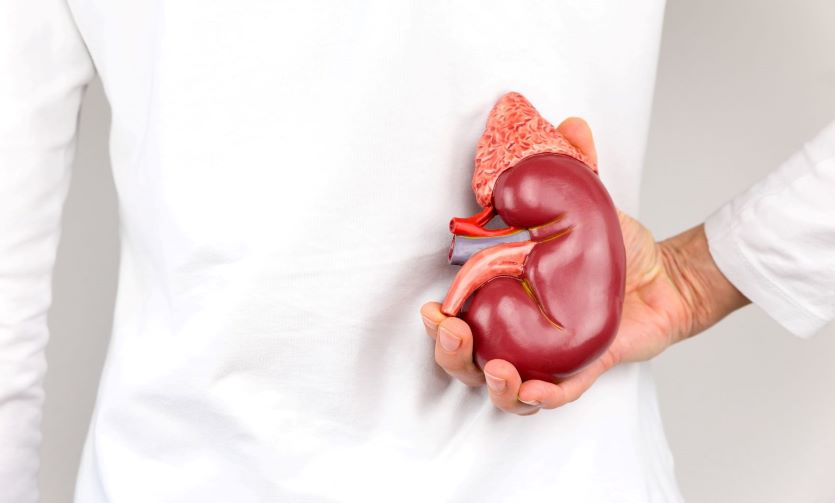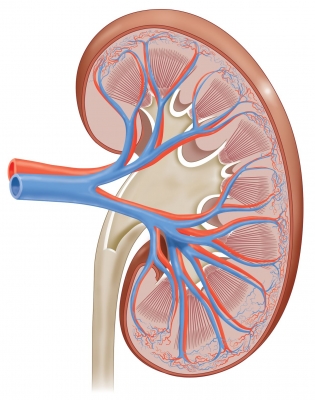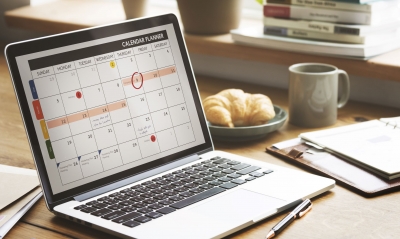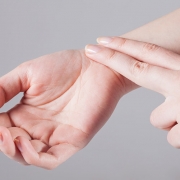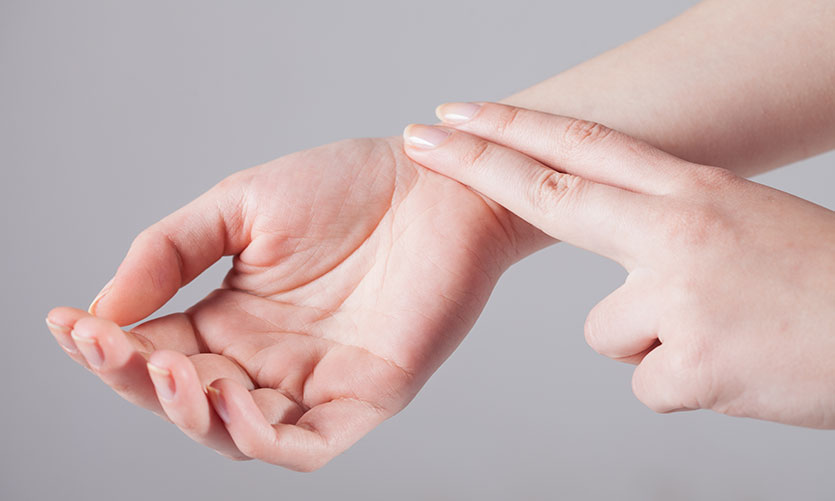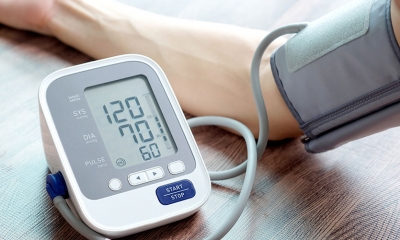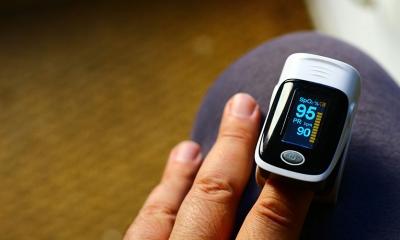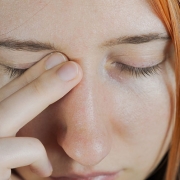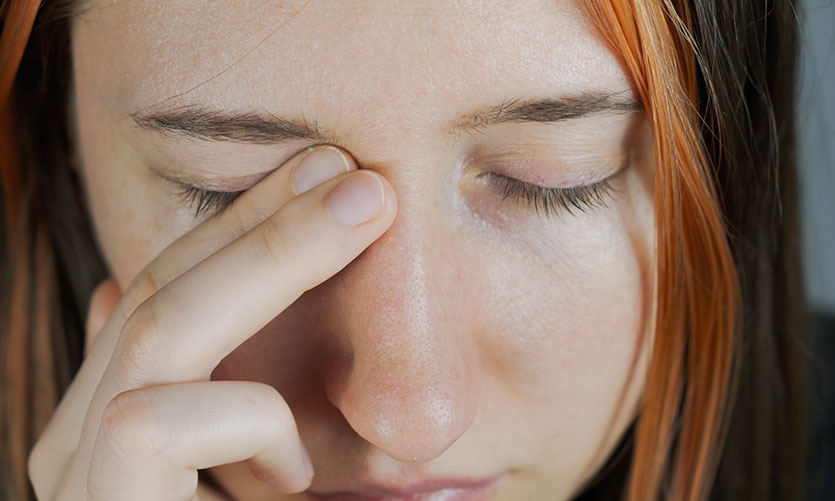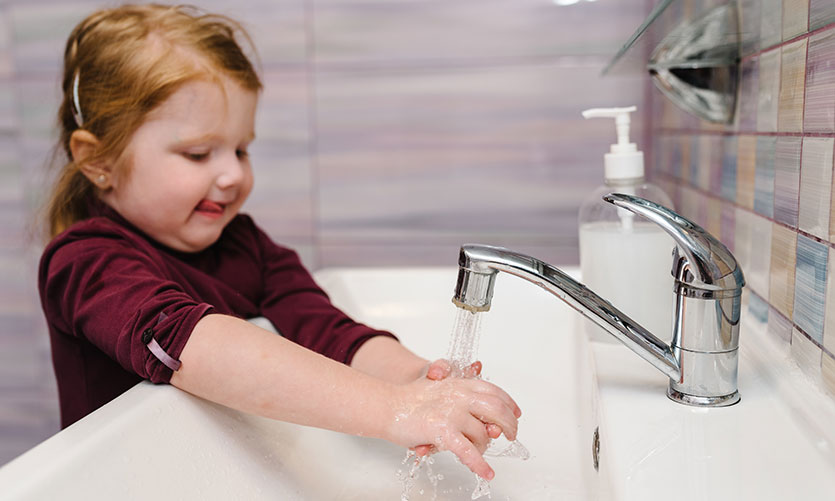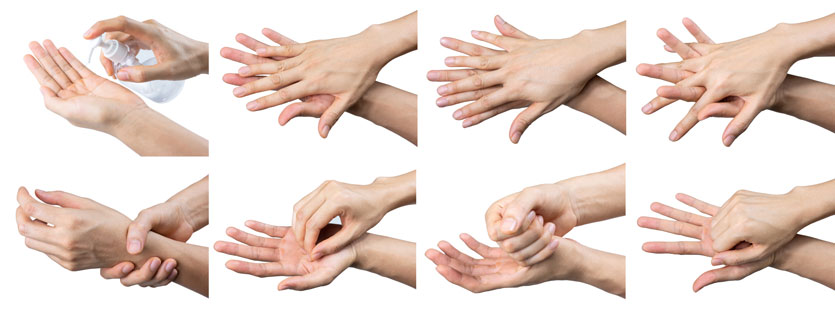Metabolism is often tied to weight. But there’s much more to it than how easily the numbers on the scale change. You’ve probably heard someone blame weight gain or feeling sluggish on having a “slow” metabolism—you’ll learn later that it’s not completely out of your control. But this is a common misunderstanding of the concept of metabolism.
The meaning of the word “metabolism” is very simple, yet few people seem to understand what it is and what it does. Metabolism is the set of chemical processes that take place in living organisms to sustain life.
On a microscopic scale, the reactions and processes that maintain cellular health are referred to as cellular metabolism. These reactions are catalyzed by enzymes and organisms big and small rely on them for growth, reproduction, structural maintenance, and responses to their environment. In the broadest sense, metabolism is what gives organisms life. Without it, there is none.
Your metabolism has three main functions:
- Converting food to energy
- Converting food to building blocks for proteins, lipids, nucleic acids and certain carbohydrates
- Eliminating waste products
So the health of your metabolism ultimately depends on your diet and nutrition. You must eat and drink to provide the energy (calories) and metabolic building blocks (vitamins, minerals, amino acids, and essential fats) needed to fuel your actions, sustain your structure and integrity, and eliminate toxic wastes and cellular debris.
Without calories, there is no fuel. Without adequate nutrients, there are no building blocks to support structural integrity and mechanical function. And without proper elimination, toxic wastes and cellular garbage accumulate. Inefficient function in any of these areas will result in poor health.
Building Up or Breaking Down—It’s All About the Metabolism
All metabolic reactions are either anabolic or catabolic. Let’s define these different types of metabolism:
- Anabolism (building up) supports new cell growth and production, storage of energy, and maintenance of body tissues.
- Catabolism (breaking down) is the disassembling of fat, protein, and carbohydrates to release energy, keep you warm, and allow your muscles to contract.
The food you eat comes in the form of proteins, carbohydrates, and fats. So the breakdown of these macronutrients and the elimination of wastes during digestion are catabolic reactions. (Check out a more detailed journey through the digestive system here.)
The Break Down: Catabolic Metabolism Simplified
In general, catabolism is the group of processes that break down large molecules into smaller ones for the purpose of providing energy and building blocks to construct new molecules.
Catabolism happens in stages, from general to very specific. First, large organic molecules (macronutrients) are digested from food into smaller compounds. Specific enzymes breakdown proteins, carbohydrates, and fats into much smaller and simpler chemicals.
- Proteins yield amino acids.
- Large carbohydrates (such as polysaccharides) are broken down to mono- and disaccharides (simple sugars).
- Fats are split up into small fatty acids and monoglycerides.
These processes of digestion occur outside the cells. Then the smaller and more basic molecules are absorbed by the cells and converted into even smaller molecules like acetyl-CoA, which promote the release of energy.
Additional catabolic processes result in molecules that feed the citric acid cycle, electron transport chain, and oxidative phosphorylation (ATP). These chemical reactions release available and stored energy to support activity and build and support tissues.
The following is a very simplified overview of the catabolism of proteins, carbohydrates, and fats.
The Build Up: Anabolic Metabolism Basics Explained
The opposite of catabolism is anabolism. Anabolic metabolism uses the energy released from catabolism to build and synthesize complex compounds.
Simple molecules and breakdown products of catabolism—like amino acids, monosaccharides, and nucleic acids—are used as precursors to build increasingly more complex molecules. These include polysaccharides (starch), amino acids and proteins, and fatty acids.
Anabolic carbohydrate metabolism starts with the conversion of basic organic compounds—pyruvate, lactate, and amino acids—into glucose. This sugar molecule can then be used for direct cellular energy and to assemble polysaccharides (starch and
glycogen). Glycogen is a storage form of glucose that can be accessed and broken down easily when the body needs energy quickly. When blood glucose levels drop, the body taps into its reserve of glycogen in the liver and muscles to provide energy for cellular function and activity.
Amino acids are used as building blocks to construct proteins and muscle tissue. In anabolism, individual amino acids are connected by peptide bonds, and their unique sequences result in specific protein structures. These various proteins include enzymes, hormones, and compounds your body uses for cellular transport, digestion, defense, and overall structure.
Long chain fats and fatty acids are built from acetyl-CoA and NADPH through the actions of enzymes called fatty acid synthases. Most of the acetyl-CoA that is converted to fatty acids in anabolic metabolism is derived from catabolized carbohydrates.
Catabolism and anabolism work in concert to maintain balance within the body. Under normal circumstances and health, the body attempts to maintain homeostasis. If there is enough imbalance in either direction, the body will change and adapt—at least up to a certain point. If there is a deficit of fuel and nutrients the body will stay in a state of catabolism. That’s because anabolism requires energy, while catabolism releases it.
The Role of Minerals and Vitamins in Metabolism
Vitamins and minerals do not provide direct energy, but they do play vital roles in metabolism. Several B vitamins are required as co-enzymes involved in the breakdown and buildup of macromolecules you read about above.
Several minerals—magnesium, zinc, iron, selenium, copper, and iodine especially—are essential parts of many enzymes in the body involved with metabolism. Minerals are also required for the building of new muscle and bone, which helps support normal body growth.
What is Metabolic Rate?
Metabolic rate is a way of explaining how much energy your body needs to fulfill all of its needs in providing for maintenance of body structure, energy use and storage, and cellular processes. Simply put, it’s the rate at which your body uses energy or burns calories.
When people refer to their metabolism being slow—typically as a cause of weight gain—they are referring to metabolic rate. Now that you have a very general idea of the meaning of metabolism, you can further explore metabolic rate and how they connect.
Basal Metabolic Rate
There are several pieces to the metabolic-rate puzzle. The first and largest fraction of your metabolic rate is known as Basal Metabolic Rate (BMR).
The BMR measures the total calories you need to perform the body’s most basic functions, like respiration, circulation, brain activity, and cellular activities. In other words, it’s the calories you require to maintain your body if you were sleeping all day.
Measuring your BMR accurately is done under restrictive conditions and requires specific lab equipment and procedures. However, there are mathematic formulas you can use to get a reasonably accurate idea of your BMR. In general, your body size and muscle content have the most influence on your basal energy requirements.
You may also see metabolic rate described as Resting Metabolic Rate (RMR). Because BMR and RMR are essentially the same, those terms are often used interchangeably.
Use This Equation to Calculate Your BMR
The Harris-Benedict equation is the most common way to estimate your basal metabolic rate. There are other formulas you can use, or, better yet, calculators that do it for you (see references).
Harris-Benedict Equation:
- For men: BMR = 88.362 + (13.397 x weight in kg) + (4.799 x height in cm) – (5.677 x age in years)
- For women: BMR = 447.593 + (9.247 x weight in kg) + (3.098 x height in cm) – (4.330 x age in years)
Adding an Activity Factor
For most people, the next largest portion of their energy requirement and metabolic needs is activity level. The principle is simple—the more active you are, and the more intense your activity, the more energy you require.
Measuring exactly how many calories you burn during any given activity is difficult, if not impossible, under real world conditions. There are various tables available to help estimate the energy (in calories) you expend doing different activities.
Body weight is factored in this estimate because it takes a lot more energy for a 200-pound (91 kilogram) person to run a mile than for a 120-pound (54 kilogram) person. In most people, physical activities account for about 15-30 percent of total daily energy requirements.
Estimate your activity level factor by choosing a category that most fits your current lifestyle:
- Sedentary (desk job, mostly sitting, little to no exercise or extra activity): Calorie Calculation = BMR x 1.2
- Lightly active (sedentary job, activity like chores and walking 1-3 days/week): Calorie Calculation = BMR x 1.375
- Moderately active (moving around and active during the day, moderate workouts 3-5 days/week): Calorie Calculation = BMR x 1.55
- Very active (active during the day, sports or vigorous exercise on most days): Calorie Calculation = BMR x 1.725
- If you are extra active (heavy and demanding physical work, intense workouts 6-7 days/week) : Calorie Calculation = BMR x 1.9
Adding activity level to your BMR gives you a value known as Active Metabolic Rate (AMR). You can calculate your AMR by multiplying your BMR and by your current level of activity from above.
Your AMR represents the number of calories you need to consume each day to stay at your current weight. If your goal is to lose weight, you would need a calorie deficit. That means you need to increase your physical activity level or decrease your energy intake by consuming fewer calories.
Thermic Effect of Food (TEF)
In addition to your basal and active metabolic rates, there are a couple of other minor factors that can influence your total energy expenditure. One is the level of energy spent during eating and digestion. This is known as the Thermic Effect of Food (TEF).
It takes energy to digest, absorb, break down, and store nutrients.
- Protein requires the most energy to digest and metabolize, so it has the highest thermic effect.
- Carbohydrates require less energy than protein, and the more complex the carbohydrate, the higher the thermic effect. Starch and fiber have higher energy demands than simple sugars.
- The thermic effect of fat is very low. It takes very little energy to digest, absorb, and store fat.
Overall, the TEF can account for as much as 10 percent of calories burned per day. That means eating a healthy protein-rich diet can make a difference over time.
Brown Adipose Tissue
Energy expenditure in adult humans isn’t impacted much by brown adipose tissue (BAT). But it’s worth mentioning since it’s a hot topic of current research.
Most adipose tissue (fat) is white. Each white fat cell contains a single lipid droplet. By contrast, brown fat cells contain numerous smaller droplets. The high number of iron-containing mitochondria and capillaries in the brown fats cells are what give the tissue its brown color. The primary function of BAT is in thermoregulation, or maintenance of core body temperature. This explains the abundance of BAT in newborns and hibernating mammals.
The prevalence of BAT diminishes with age in humans, but it is known to be present in adults with active and healthy metabolisms. Currently there is little evidence to support products or techniques to exploit or activate BAT in adults, but it is possible that this tissue may account for a small percentage of energy expenditure in some individuals.
What You Can Do to Support Your Metabolism
Many products and exercise methods promise to instantly rev-up your metabolism. But it’s not quite as simple as advertised. There are many factors in your control that can positively affect your metabolism, though. And making strides in these areas support your metabolism and help optimize vim and vigor throughout all aspects of your life.
Here some habits and activities you can perform to keep your metabolism performing at its best:
- Exercise Regularly – Remaining sedentary is not good for you or your metabolism. All activity and exercise that increases heart rate increases blood flow. This delivers more oxygen and nutrients to cells where they are needed to support metabolism. With sporadic activity, the effect may only be temporary, but consistent exercise leads to more long-term effects and benefits. Combining endurance or aerobic exercise with resistance exercise and weight training will deliver the greatest benefit. You may have heard it takes a lot more metabolic energy to maintain muscle than fat. That’s true. So maintaining or increasing your muscle mass will help keep your metabolism younger while you age.
- Stay Hydrated – If you want to extract the most from your exercise and metabolism, you need to stay hydrated. Some research has shown that lack of good hydration can stall your metabolism, putting the brakes on burning energy and weight loss. Cool, pure water or an appropriate sports drink are typically best.
- Commit to Restful Sleep – It may seem obvious, but poor and irregular sleep can make your metabolism sluggish. It can also affect your motivation to exercise and eat right. Your body performs important repair and building functions during sleep, so cutting corners on sleep is likely to lead to poor overall health—in addition to a slower metabolism.
- Manage Stress – Stressful situations prompt your body to increase cortisol production. That’s good if you need to handle a short-term crisis. On the other hand, chronic and unmanaged stress leads to consistently high cortisol levels that can be a huge problem. Cortisol impairs insulin sensitivity and that leads to possible weight gain and a lethargic metabolism.
- Avoid Starvation Diets – Your metabolism can’t zip along efficiently if it doesn’t have the right fuel and a consistent supply of nutrients. If your calorie (energy) intake is too low for very long, the body will slow down building, repair, digestion, and other high-energy consuming functions of metabolism. This often happens when people undertake excessively rigid or strict diets, and one reason why trying to lose weight too fast can be counterproductive. If your daily energy intake is not enough to maintain normal activities and alertness, that’s a sign you may also be blunting your metabolism.
- Eat a Varied, Nutritious Diet – Adequate fuel alone doesn’t do the trick. Quality protein, vitamins, and minerals in the right amounts are needed to build and supply hormones, enzymes, and structures you need to keep your body and metabolism strong. Several B vitamins and minerals, like calcium and iron, are key nutrients for maintaining a healthy metabolism. A plant-based diet is healthy and generally recommended.
But don’t skimp on quality protein or your muscles and your metabolism will suffer for it.
- Get Regular Medical Check-Ups – If you’re doing everything else right but aren’t making the progress you should, check with your health-care provider about your medications, hormones, and genetics. Some medications can interfere with metabolism. And, for many reasons, some hormones levels can be off kilter. Hormonal issues related to the thyroid or endocrine system can often be adjusted or treated to put you on the right track. You can’t really alter your genetics, but, in some cases, it can provide information that a qualified professional can use to structure a diet or regimen that works best for you.
Your metabolism is very complex. But the basic principle is simple: It’s the way your cells convert the food and nutrients you eat into the energy and processes you need to move, think, breath, and exist. Under normal conditions, having a healthy metabolism has little to do with luck—and everything to do with following principles of healthy eating, exercise, and beneficial lifestyle habits.
References
https://www.mayoclinic.org/healthy-lifestyle/weight-loss/in-depth/metabolism/art-20046508
https://www.healthline.com/nutrition/10-ways-to-boost-metabolism
https://www.webmd.com/diet/ss/slideshow-boost-your-metabolism
https://www.rush.edu/news/how-metabolism-really-works
https://www.nhs.uk/live-well/healthy-weight/metabolism-and-weight-loss/
https://www.health.harvard.edu/diet-and-weight-loss/does-metabolism-matter-in-weight-loss
https://www.news-medical.net/life-sciences/What-is-Anabolism.aspx
https://manytools.org/handy/bmr-calculator/
https://www.news-medical.net/life-sciences/Metabolism-Key-Biochemicals.aspx
https://www.verywellfit.com/what-is-bmr-or-basal-metabolic-rate-3495380
https://www.calculator.net/bmr-calculator.html
https://www.omnicalculator.com/health/bmr-harris-benedict-equation







